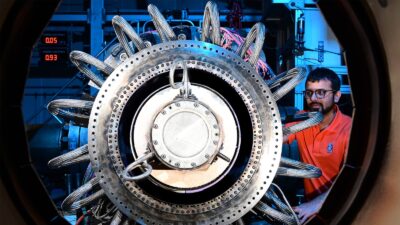You might never have heard of a Lifetime ISA, as providers are mostly pushing cash ISAs which pay piddling amounts of interest instead.
But a Lifetime ISA could be the best ISA option there is, with its bonus of up to £1,000 per year added by the government. I’ve previously explained how the Lifetime ISA works, but beware. If you take money out early, you’ll be stung with a financial penalty of more than the government’s bonus cash.
But if really want to invest for your retirement, a Lifetime ISA could be a very nice thing — though time could be running out.
Given the meagre returns from cash ISAs, I reckon shares are the only way to go. And I prefer “buy and forget” shares, with a combination of solid dividends, growth potential, and a nice margin of safety.
Out of favour
Those criteria throw up recruitment specialist SThree (LSE: STHR), whose earnings have been flat for a couple of years in the current tough economic environment. That’s led to a freeze on the dividend, which will have turned away some investors, and the share price has dipped over the past month.
But I see an overlooked bargain, as analysts are predicting earnings growth this year and next. The falling share price has pushed the predicted 2018 dividend yields up to 4.6%, with 4.8% on the cards for next year, too. And we’re looking at a strengthening of cover by earnings, reaching 2.2 times on 2019 forecasts.
I think the combination of earnings growth, assuming forecasters are correct, coupled with a well-covered dividend that looks set to start rising again in the fairly short term, gives us a reasonable safety margin here. I also see forward P/E multiples of only around 10 as indicating good value.
Big debt could ruin the picture, but a net figure of just £24m at 31 August is nothing for a company with annual turnover of around £1bn.
SThree has been buying up its own shares with surplus cash, so it clearly sees them as good value. I agree.
Overlooked growth
I also now like the look of Severfield (LSE: SFR), whose shares have been out of favour for good reason.
The structural steel engineer went through a bad patch a few years ago and needed a big rights issue to keep itself afloat. But the turnaround looks to have been a success and earnings per share have been recovering strongly for the past few years. Dividends have risen too, and are expected to yield 4% this year, and 4.4% next — with cover reaching 2.4 times by March 2020, according to forecasts.
Those same forecasts value the shares at about 10 times earnings, which is cheaper than the FTSE 100’s long-term average of around 14. With dividend yields around the current Footsie average, that might seem fair when allowing for post-recovery sentiment that will surely still be a little uncertain.
But what sways any doubt I might have is Severfield’s cash position. Instead of the debt we might expect a company in its position to be carrying, Severfield boasted £33m in net cash at 31 March.
These two need further investigation, but I see attractive long-term prospects for both.







